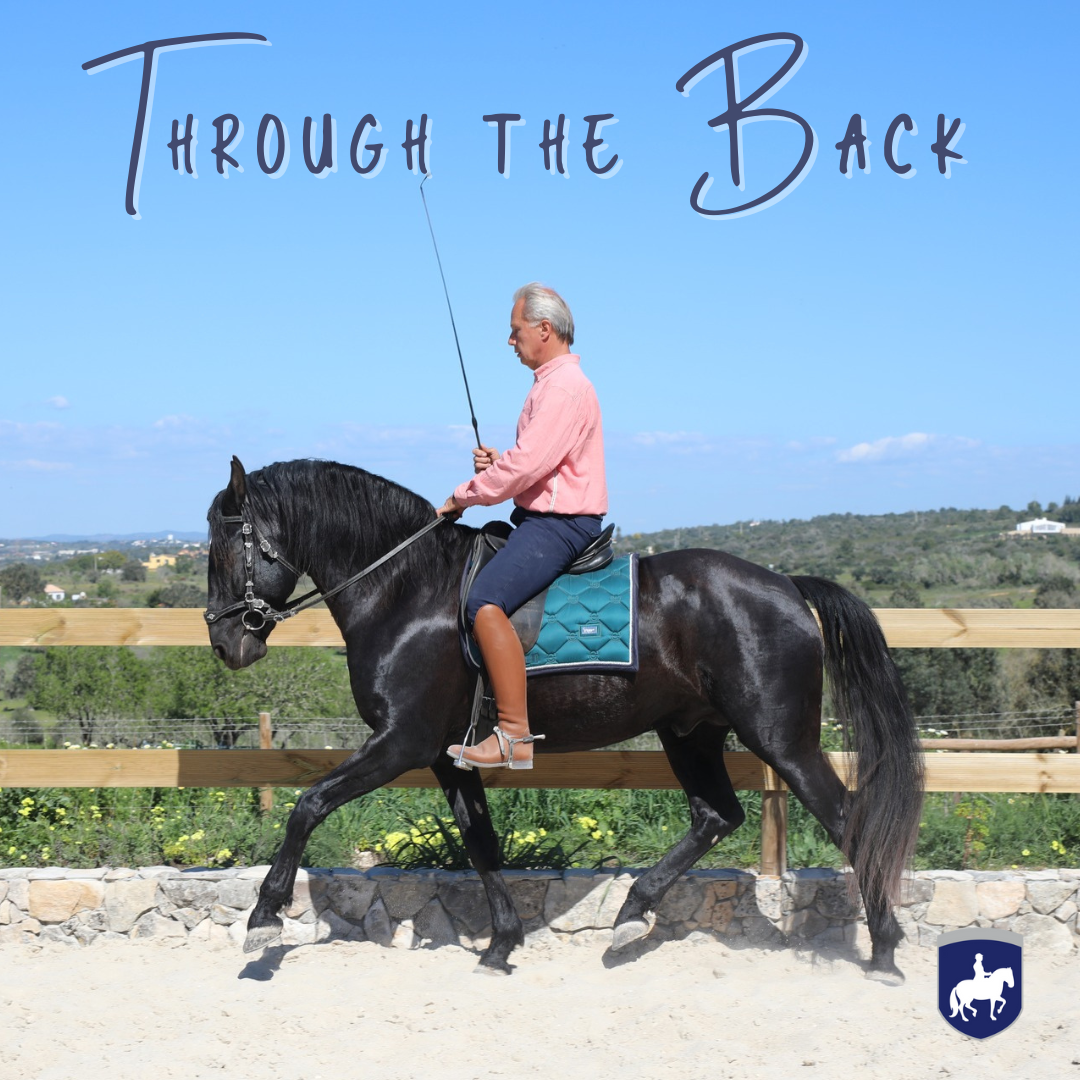The swinging movement and energy connection that are the result of a horse working properly through the back create a feeling you will never forget. Choose exercises and arena patterns that encourage the horse to engage and flex his hind legs, and remember to use your seat in a dynamic way that supports the horse’s movement, so that he is able to lift his back, engage his hind legs, flex his hind legs, and push off again with them in a forward-upward direction.
Some Thoughts About Energy
Energy is not an official part of the training pyramid. It’s not really a formal category of training, although teachers will sometimes ask students to ride a more energetic walk, trot, or canter. I suspect that when teachers tell the students to “ride more forward” they often mean “create more energy”, but the word “forward” tends to lead to more speed, rather than more energy or more power.
The closest thing in the official terminology is Schwung/Impulsion, but it’s not quite the same as energy.
Consequences of Crookedness
In one of our courses, a member asked a question about crookedness. She wanted to know which exercises to ride on the hollow side and the stiffer side to combat the symptoms of crookedness. There is unfortunately not a simple, straightforward answer to this because crookedness leads to imbalance on several different levels, such as…
More Forward!
“Ride more forward!” is probably one of the most frequent instructions dressage riders hear from their teachers. Unfortunately, riding forward is often misunderstood as riding fast (by teachers as well as students). However, true “forward” begins with the horse "thinking forward”, which means that his first instinct should be to take a step forward (not sideways or backward) whenever you apply a driving aid.
Developing Pushing Power in the Hindquarters
Where are we and what are we doing today?
We are visiting Noor Tanger and Patrick Molenaar in the Netherlands for a few days.
I worked with Noor Tanger and her PRE Stallion Oclajoma on developing power in the hindquarters, especially pushing power. We explained to him that he can put more energy into the walk, trot, or canter, without getting faster, and that he can slow down the tempo without going to sleep. These are not intuitively logical concepts for most horses, but they have to learn that a driving aid does not mean “go faster”, and a half halt doesn’t mean “take a break”. Tempo, stride length, and energy level are different parameters of the gait that can be adjusted separately.





